 |
 |
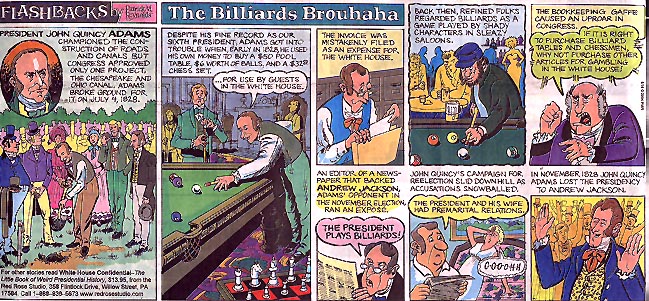
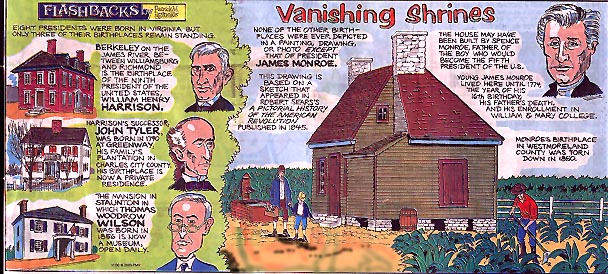
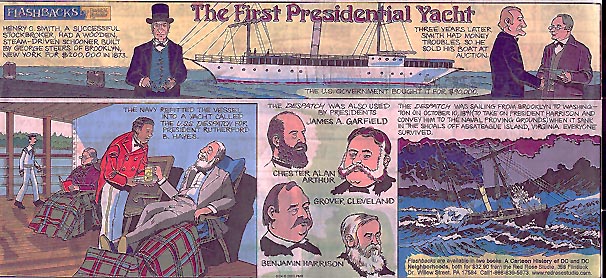
 

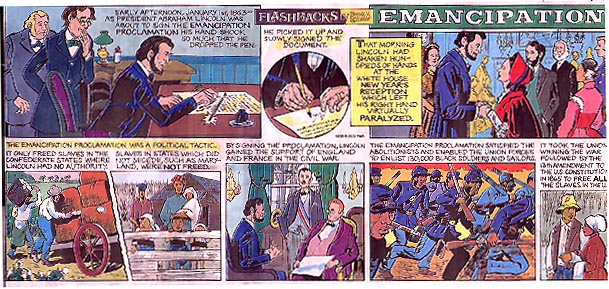
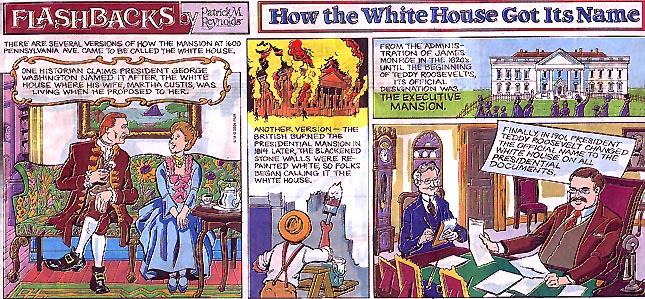
 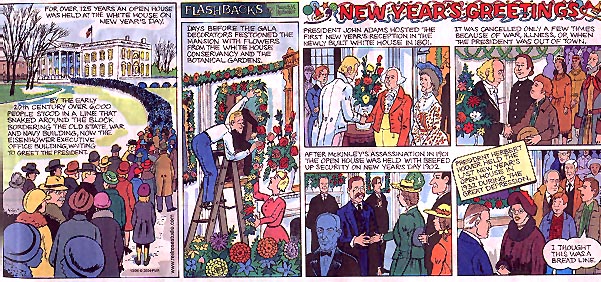


|
The Origin of OK as a positive response has many versions.
During the Battle of New Orleans in 1815 General Andrew Jackson
asked Pushmantaha, leader of some 500 Choctaws, "How are
our warriors doing against the British?"
Panel 2: Jackson started using the term. He became our seventh
president, serving from 1829 to 1837. Jackson: "My Vice-President
John C. Calhoun resigned. That's OK with me."
"Okeh." Meaning "It is so"
Panel 3: "OK" first appeared in print in the Boston
Morning Post of March 23, 1893. Its editor Charles Gordon
Greene explained, "It's a variation on an incorrectly spelled
slang term Oll Korrect.
Panel 4: Our eighth president Martin Van Buren ran for
reelection in 1840 against....
Panel 5: General William Henry
Harrison who sported the nickname Tippicanoe, after his
famous victory in the War of 1812.
Panel 6: Van Buren's campaign managers: "He needs a catchy
nickname.
"A lot of ads use Old suchas Old Glory."
"President Van Buren hails from Kinderhook, New York."
"That's it. How 'bout Old Kinderhook.."
Panel 7: Overnight, Democratic
OK (Old Kinderhook) Clubs sprang up across the country. Van Buren's
supporters work "OK" badges.
Panel 8: Unfortunately for Van Buren the voters OK'd Harrison
for Prez.
Panel 8 footnote: OK Lives on
as a slang expression for something good in many languages.
|
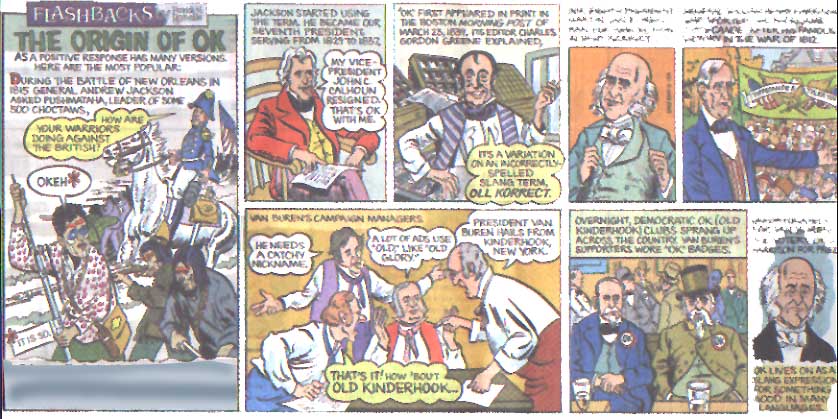
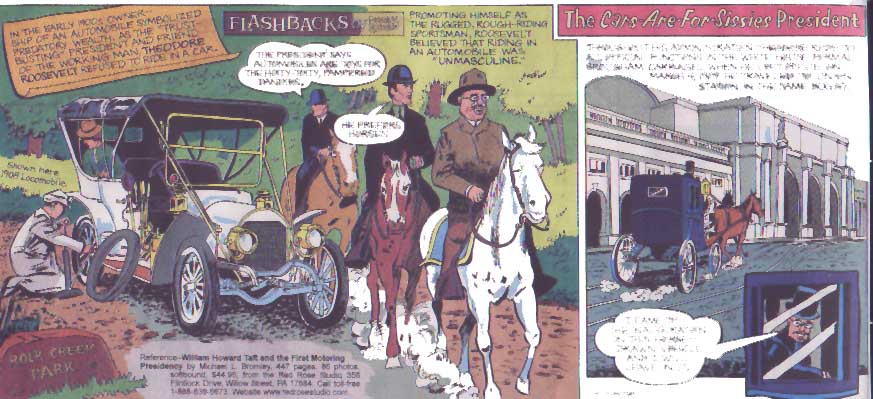 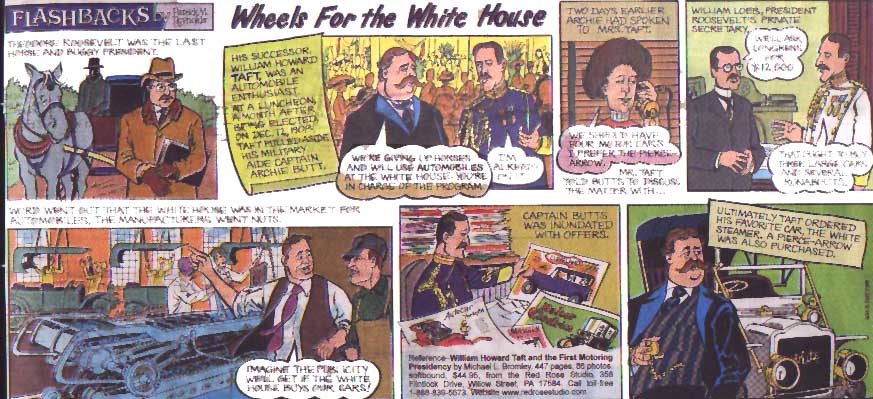
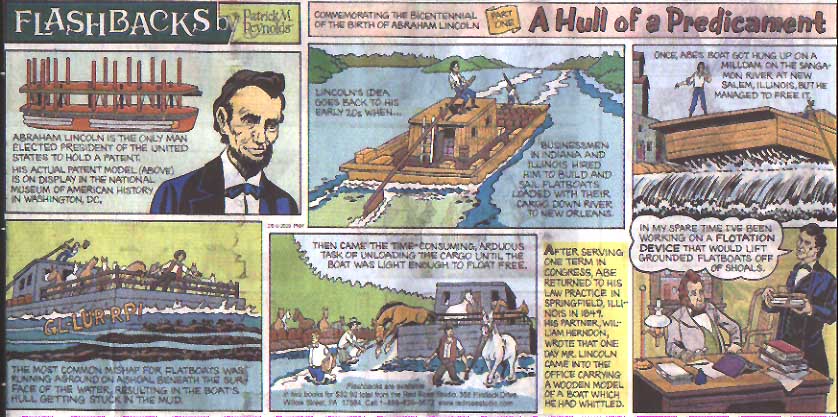
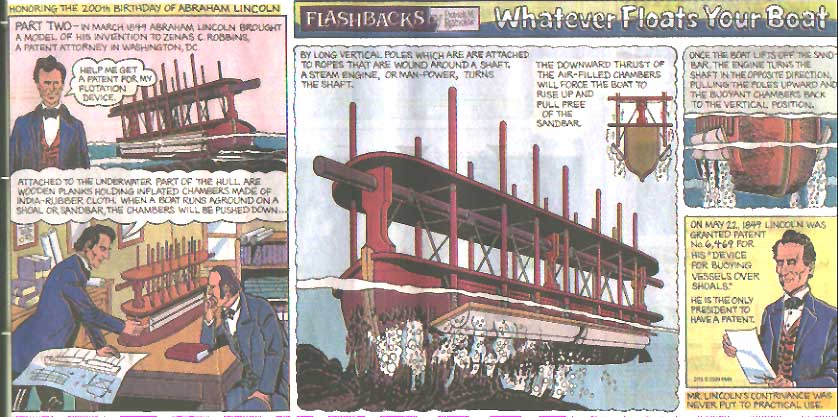
An excellent reference that gives an overall description of every
president:
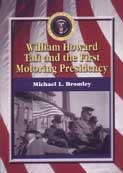 |
William Howard Taft and the First Motoring
Presidency by Michael
L. Bromley
Here is an off-beat look at the oft-maligned presidency of William
Howard Taft which focuses primarily on his cars and the role
of the automobile in the politics of his day. The appendices
provide information on the White House garage and stable, Taft's
speech to the Automobile Club of America, and a glossary. Unlike
his predecessors, who made public their disdain for cars, Taft
saw the automobile as a great source of wealth for the country.
The first president to acquire a car in office (actually Congress
granted him three), Taft put a garage at the White House in 1909.
7" x 10" 439 pages, index, illustrated, paperbound
ISBN 0-7864-2952-6
#482 Taft and First Motoring Presidency $40.95  |
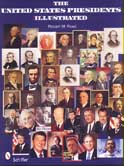 |
The
U.S. Presidents Illustrated by Robert M. Reed
Bios of all 44 presidents up to Obama. The unique aspect of this
book is the profusion of off-beat ways that pictures of the Prez
appeared, from official White House photos to boxes and post
cards.
8½ x 11” 144 pages, illustrated, paperbound
#244 Presidents Illustrated $25.00
 |
Click
here for more books about the
Presidents and the White House |
For
about 80 years after George Washington was president, nobody
referred to the wife of thepresident as the First Lady.
Pictured here left to right, from top: Mary Lincoln, Michelle
Obama, Barbara Bush, Marth Washington, Pat Nixon, Eleanor Roosevelt,
Mamie Eisenhower, Jackie Kennedy, and Nancy Reagan.
2. Most likely the first time the term First Lady
appeared in print was in 1860 in Frank Leslie's Illustrated
Newspaper.
3. However, it did not mean the president's wife. It was
Harriet Lane, President Buchanan's niece.
James Buchanan was a bachelor, so his niece served as hostess
of the White House.
4. A writer for Leslie's Illustrated described Ms. Lane
as "the lady of the White House, and by courtesy, the First
Lady of the Land."
But the title did not catch on until....
5. A reporter, Mary Clemmer Amers started to use "the First
Lady" in her column A Woman's Letter From Washington
for the Independent, a Protestant weekly out of New
York City.
6. Mrs. Ames wrote about the March 4, 1877 inauguration of President
Rutherford B. Hayes, but she was more impressed by...
7. The President's wife. In her writings, Mary referred to Mrs.
Hayes as "the First Lady." Lucy Hayes was very popular,
and soon the press called her the First Lady. The title has been
in use ever since. |
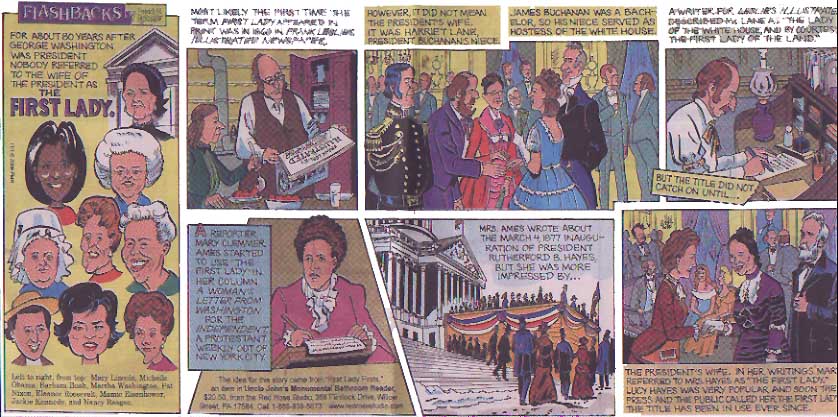 |
Here are two volumes containing
reproductions of Flashbacks cartoons:
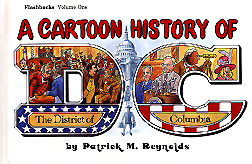 |
A Cartoon of the
District of Columbia Flashbacks
Volume One Patrick M.
Reynolds brings history
to life with a sense of humor. His exciting drawings put you
on the scene with the conflicts, madness, plus the wheeling and
dealing that resulted in the location and construction of the
U.S. capital city. This book covers the early history of DC from
1776 to 1863. You'll be surprised at how many cities served as
the U.S. capital; you'll be amazed that the city was built--despite
all the bickering, petty jealousies, and down-right stupidity.
11¾" x 7½" 106 pages, full color illustrations,
index, paperbound ISBN 0-932514-31-6
#F1 Cartoon History of DC $25.00
 |
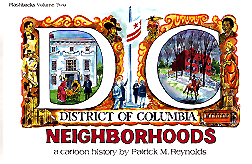 |
DC Neighborhoods Flashbacks
Vol. Two Artist-writer Patrick M. Reynolds takes
you to the Washington that tourists seldom see The U.S. capital
expanded with the growth of public transportation into such areas
as Shepard Park, Takoma Park, Chevy Chase, Kalorama, Dupont Circle,
Adams Morgan, Capital Hill, LDroit Park, Tenleytown, Brookland,
and others. Stories in this book go back to the explorations
of Capt. John Smith in the 1600s and the Indian Wars of early
Virginia, continuing into the 20th century with the introduction
of the cherry trees to Washington and the end of segregation
in public schools.
11¾" x 7½" 106 pages, full color illustrations,
index, paperbound ISBN 0-932514-31-6
#F2DC Neighborhoods $14.95
  |
|
|
Previous weeks' stories and references:
Combat Artists...The
Ghost Army of WWII... Artists
in War The Limb Maker...Duke Ellington...Ferries
Across the Chessie .. Ninian
Beall Sequence.....UFOs
Over Washington Culpeper
of Virginia...The
Spanish Flu Epidemic of 1918...Indians
of the Eastern Shore of MD & VA...Black
Confederates... Pirates on the Chesapeake...Ghost stories...Clovers...Hoover
Airport...Slavery
e-mail:
pat@redrosestudio.com or redrosestudio@dejazzd.com
|















